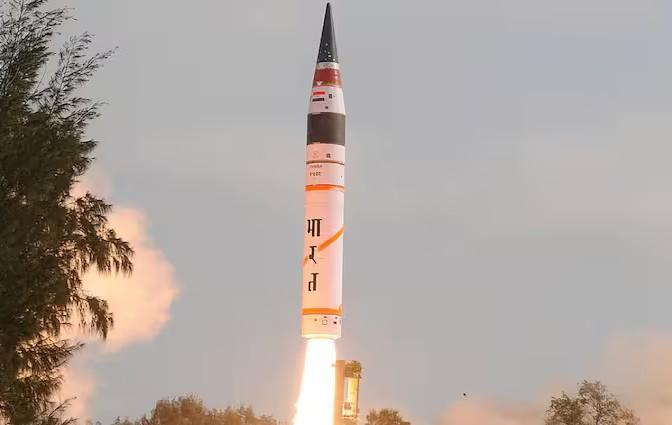
India Successfully Test-Fires Agni 5 Ballistic Missile
In a significant milestone for India’s defense capabilities, the Defence Ministry has announced the successful test-firing of the indigenously developed Intermediate Range Ballistic Missile (IRBM) Agni 5. The test took place on Wednesday, August 20, at the Integrated Test Range (ITR) in Odisha’s Chandipur, under the aegis of the Strategic Forces Command (SFC).
The Defence Ministry, in a statement, confirmed that the launch validated all operational and technical parameters, reiterating the country’s capabilities in developing and testing advanced military technology. The test-firing of Agni 5 is a significant achievement, underscoring India’s commitment to bolstering its national security and enhancing its defense capabilities.
Agni 5 is a three-stage, solid-fueled IRBM with a range of approximately 5,000 kilometers (3,107 miles). It is designed to carry nuclear warheads and is capable of reaching targets deep within the enemy’s territory. The missile is equipped with advanced guidance systems, including inertial navigation and terminal guidance, which enable it to precision-strike targets.
The test-firing of Agni 5 was a significant event, as it marked the 10th successful test of the missile since its development began in 2006. The previous tests of Agni 5 have been conducted in 2012, 2013, 2015, 2016, 2017, 2018, 2019, and 2020. The success of the latest test is a testament to the progress made by the Indian Defence Research and Development Organisation (DRDO) in developing and refining the missile’s technology.
The test-firing of Agni 5 was carried out from a mobile launcher, simulating real-world operational conditions. The missile was launched at 9:45 am IST, and it successfully reached its target in the Bay of Bengal, demonstrating its accuracy and reliability. The test was witnessed by top officials from the Defence Ministry, the DRDO, and the SFC.
The success of Agni 5 is significant not only for India’s defense capabilities but also for its strategic relations with other countries. The missile’s range and capabilities make it an effective deterrent against potential threats from neighboring countries, such as Pakistan and China. The test-firing of Agni 5 is also seen as a message to these countries, underscoring India’s commitment to maintaining its national security and defending its interests.
The development of Agni 5 is a significant achievement for India’s defense industry, which has made significant progress in recent years. The country has developed a range of military systems, including ballistic missiles, fighter jets, and submarines, which have enhanced its military capabilities. The success of Agni 5 is a testament to the capabilities of Indian scientists and engineers, who have worked tirelessly to develop and test the missile.
The test-firing of Agni 5 has also significant implications for India’s nuclear doctrine. The missile’s range and capabilities make it an effective deterrent against potential nuclear threats, and its success is seen as a message to other countries that India is committed to maintaining its nuclear arsenal. The test is also seen as a sign of India’s willingness to engage in dialogue with other countries on nuclear issues, while also maintaining its national security.
In conclusion, the successful test-firing of Agni 5 is a significant achievement for India’s defense capabilities, its defense industry, and its national security. The missile’s range and capabilities make it an effective deterrent against potential threats, and its success is seen as a message to other countries that India is committed to maintaining its national security. The test is also a testament to the capabilities of Indian scientists and engineers, who have worked tirelessly to develop and test the missile.






